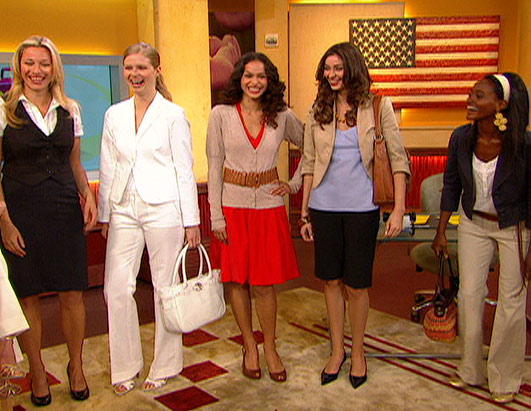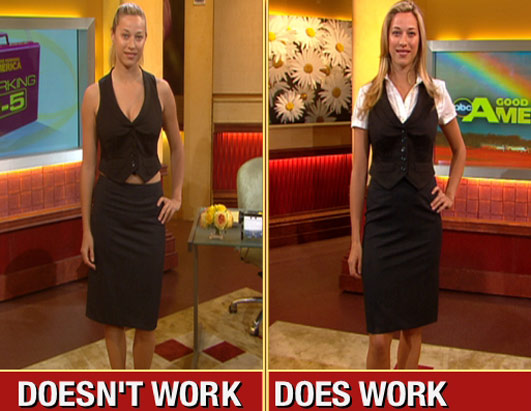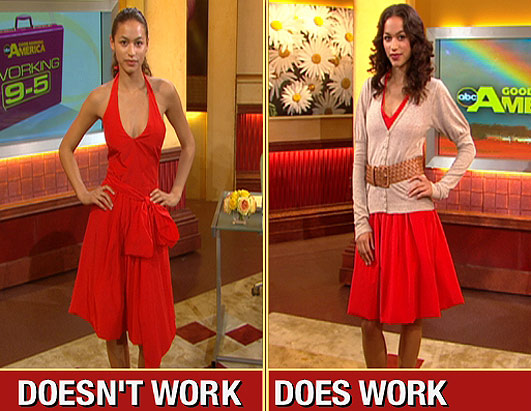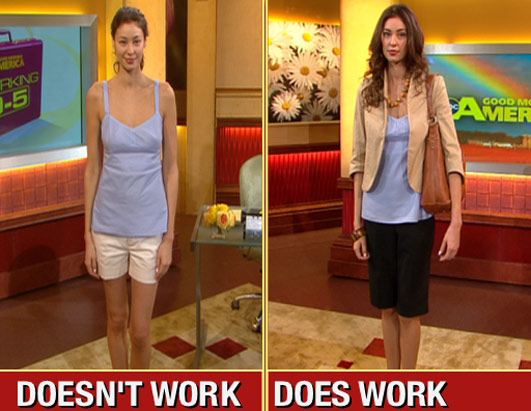- Consider your daily schedule, what will carry you through the day.
- Ladies, wear walking shoes to and from work and dress shoes at work.
- Dress for your size. Consider the messages you will send with what you wear. Check out the cut of your neckline ladies. If someone is standing while you are sitting how far down your top can they see.
- Invest in a well made suit, if appropriate, and build a wardrobe from this suit. Buy complimentary shirts, skirts, ties, slacks, and shoes. Wear up to date ties and accessories.
- Know if your workplace is a scent free environment.
- Dress to fit the environment and ensure the clothing fits you properly. Follow your boss’s lead – though this can be misleading at times.
- Use an iron and make sure your clothing is spot free and clean.
- Extreme fashions are short lived and end up costing a lot more money.
- Don’t show inappropriate skin.
- No flip flops please.
- No noisy jewellery.
- No heavy make-up.
- No T shirts with writing on the front.
- Don’t replace quality with quantity – shop consignment, Goodwill or Value Village to dress well for less.

When getting dressed in the morning, ask yourself if your clients or customers will see you as the expert you are if dressed this way. Would you want to do business with you? If you could wear what you have on to a sporting event, change it.
It is now up to corporations to write and implement their own dress code that is congruent with their work environment. While you are waiting to be told what you can and can’t wear, start tomorrow by dressing one step up from your present position. It is hard for management to promote someone who doesn’t look like they could handle the promotion or to invite you out on a client lunch or meeting if you don’t look the part.













